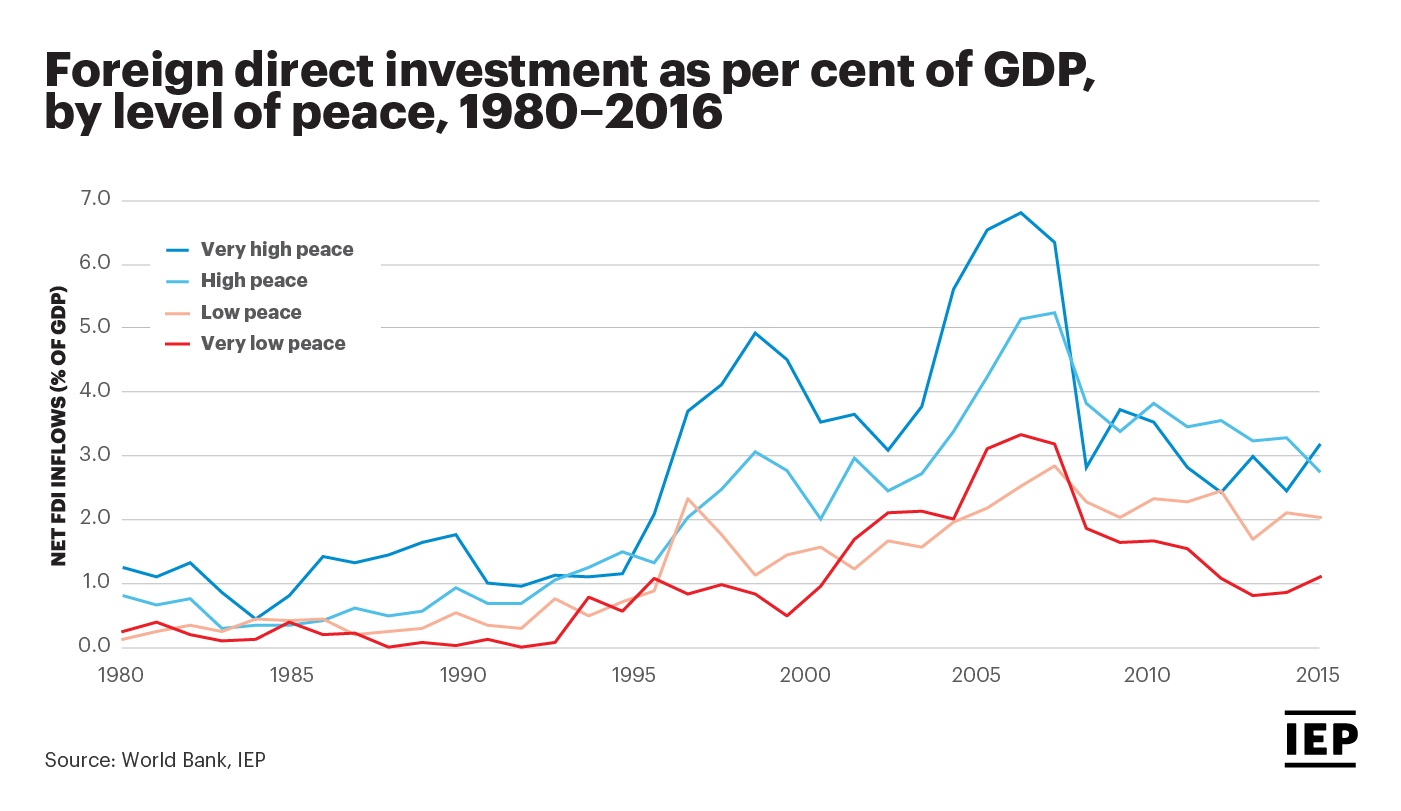The relationship between the economic prosperity of a country and levels of peace can provide peacebuilding and investment insights. Here is a closer look at the data.
Economic prosperity refers to a country’s economic growth, security, and competitiveness. Economic prosperity is important as it is a key element of quality of life and is also necessary for a country to be competitive in the global economy.
Economic prosperity and peace are often mutually reinforcing, according to the 2019 Business and Peace Report from the Institute for Economics & Peace (IEP) entitled .
Better economic performance assists in building peace and vice-versa. Together, these elements can form a virtuous cycle. Similarly, worsening performance in levels of peace hinders economic growth, forming a vicious cycle. The economy and peace can therefore be thought of as a system that can move in either a beneficial or destructive direction.
All eight pillars of IEP’s Positive Peace framework are closely tied to the performance of private enterprise and the economy.
For example, the Free Flow of Information pillar is not only critical for an informed society, but also helps market integration due to greater availability of information on prevailing prices.
Free Flow of Information also helps to keep tariff levels low, which is crucial for the efficient allocation of inputs available to the economy.
Greater Acceptance of the Rights of Others, another pillar of Positive Peace, increases the economic participation of marginalised groups, in turn increasing their purchasing power.
Highly peaceful countries registered per capita gross domestic product (GDP) growth nearly three times higher than that of low peace countries between 1960 and 2016.
Average GDP per capita grew annually by 2.8 per cent in the highly peaceful countries, while the rate was only one per cent in the least peaceful countries.
This chart illustrates the growth gap between four groups of countries categorised by their level of peace.
The trend analysis does not suggest causality between peace and economic progress, but rather shows that peace and economic progress are interlinked.
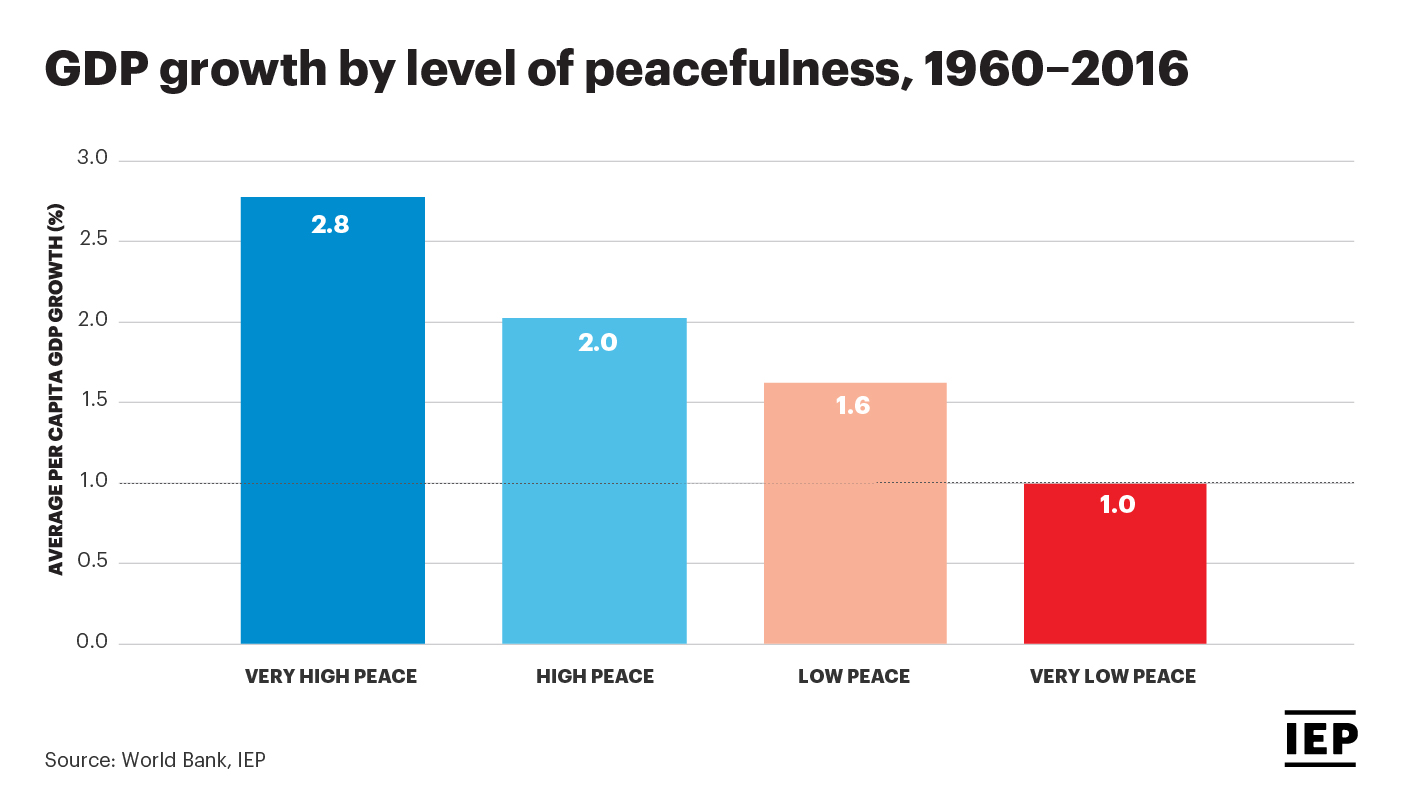
This chart shows annual growth rates since 1960 for different levels of peacefulness.
The long-term trend in economic growth shows a divergence in per capita GDP between countries with varying levels of peacefulness. GDP per capita is 20 times larger in highly peaceful countries than lower peace countries because of higher growth rates over the long run.
Persistent low levels of growth in per capita income in the least peaceful nations makes it challenging to close the existing gap in living standards, without major structural changes.
Deviations from the long-term average indicate greater volatility in growth and create more boom-and-bust cycles, as evidenced in very low peace countries in the chart. The deviation from average growth is seven times higher in less peaceful countries, leaving their economies less stable.
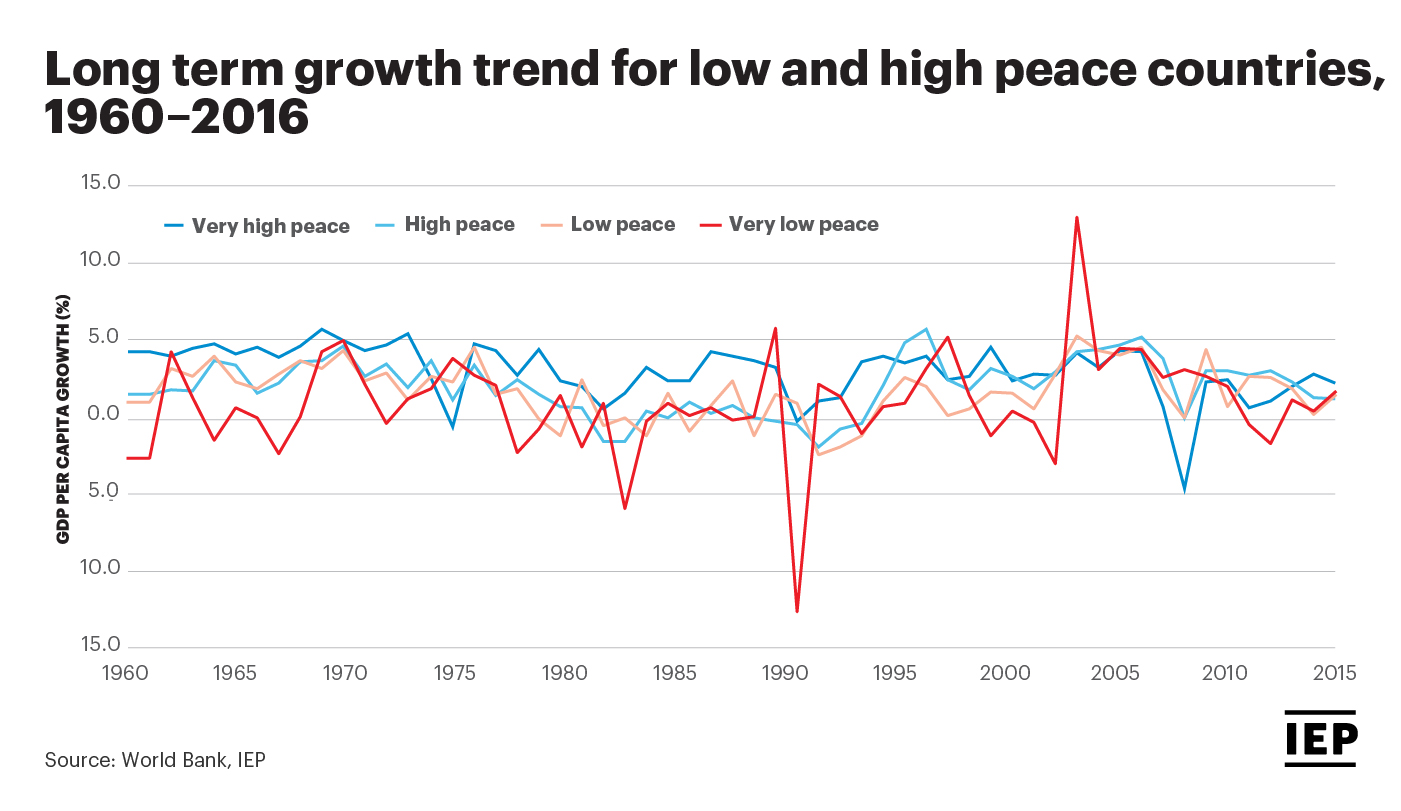
Low and stable inflation mean that changes in the general level of prices are small and predictable, which reduces future uncertainty for investors.
Price instability has negative implications for economic activity through its effects on savings, investment and consumption.
Price volatility creates risks, reduces profitability and can lead to a concentration of savings in safer, but less-productive assets. It can also lead to contractionary monetary policies, including higher interest rates, which make it difficult for businesses, as well as consumers, to borrow and invest.
Highly peaceful countries have been more effective in maintaining lower inflation and avoiding incidences of hyperinflation.
The data shows that average inflation in very high peace countries was three times lower than in the least peaceful countries. Long-term median inflation in very high peace countries was 3.5 per cent compared to 9.7 per cent in very low peace countries.
In addition, price volatility was also more prevalent in less peaceful countries.
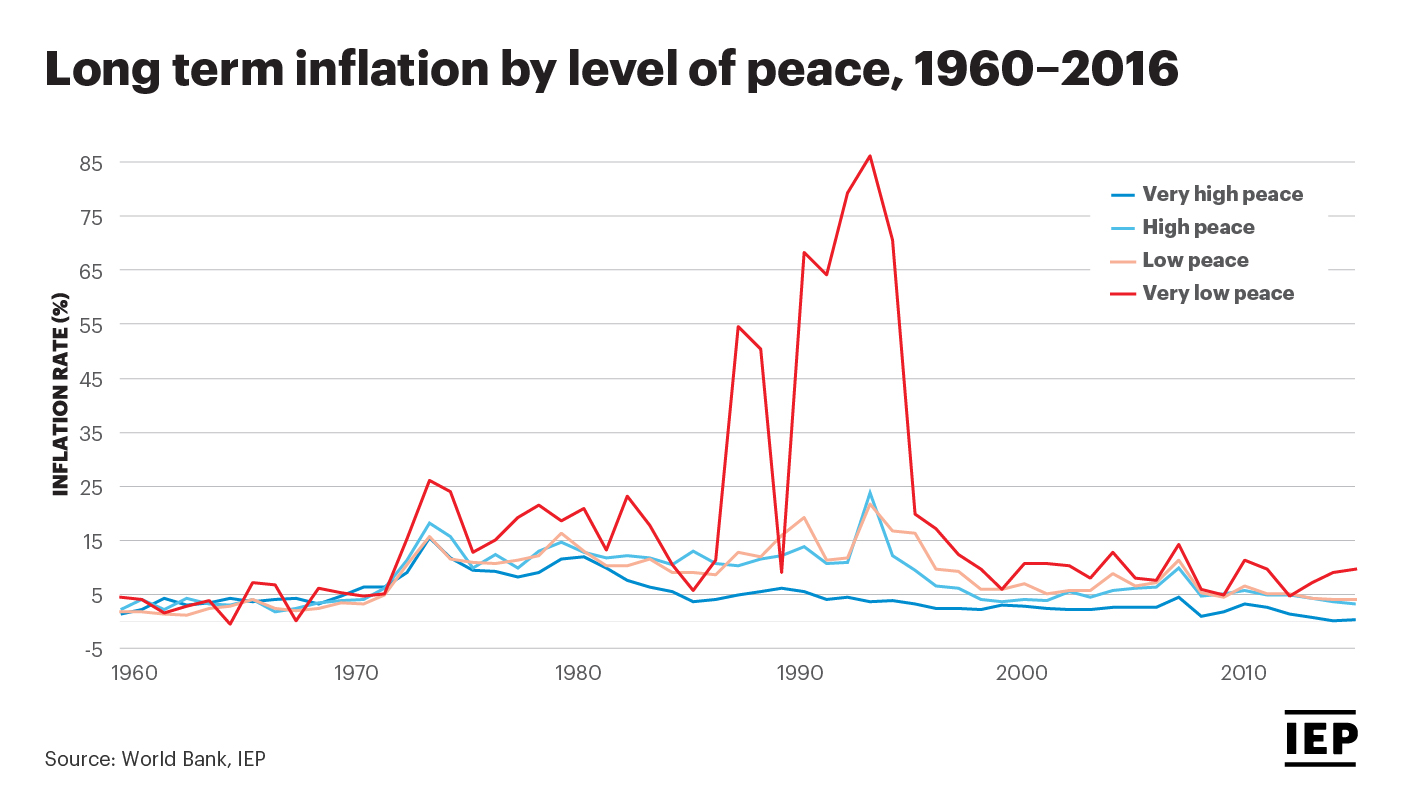
Interest rates are an important indicator of macroeconomic stability and are critical to economic successes and investment certainty.
Correlation analysis illustrates that when peace deteriorates, interest rates also become more volatile and unpredictable.
This unpredictability arises from political uncertainties, perception of risk and higher inflation. A higher interest rate inhibits investment by both businesses and households, leading to a decline in economic activity.
While interest rates have declined significantly in most countries, highly peaceful countries experienced the largest declines.
The median lending rate in the least peaceful countries was more than two times that in the most peaceful countries since 1990. The average lending interest rate in the most peaceful countries was 8.7 per cent, compared to 20 per cent in very low peace countries.
This chart shows trends in interest rates by level of peace.
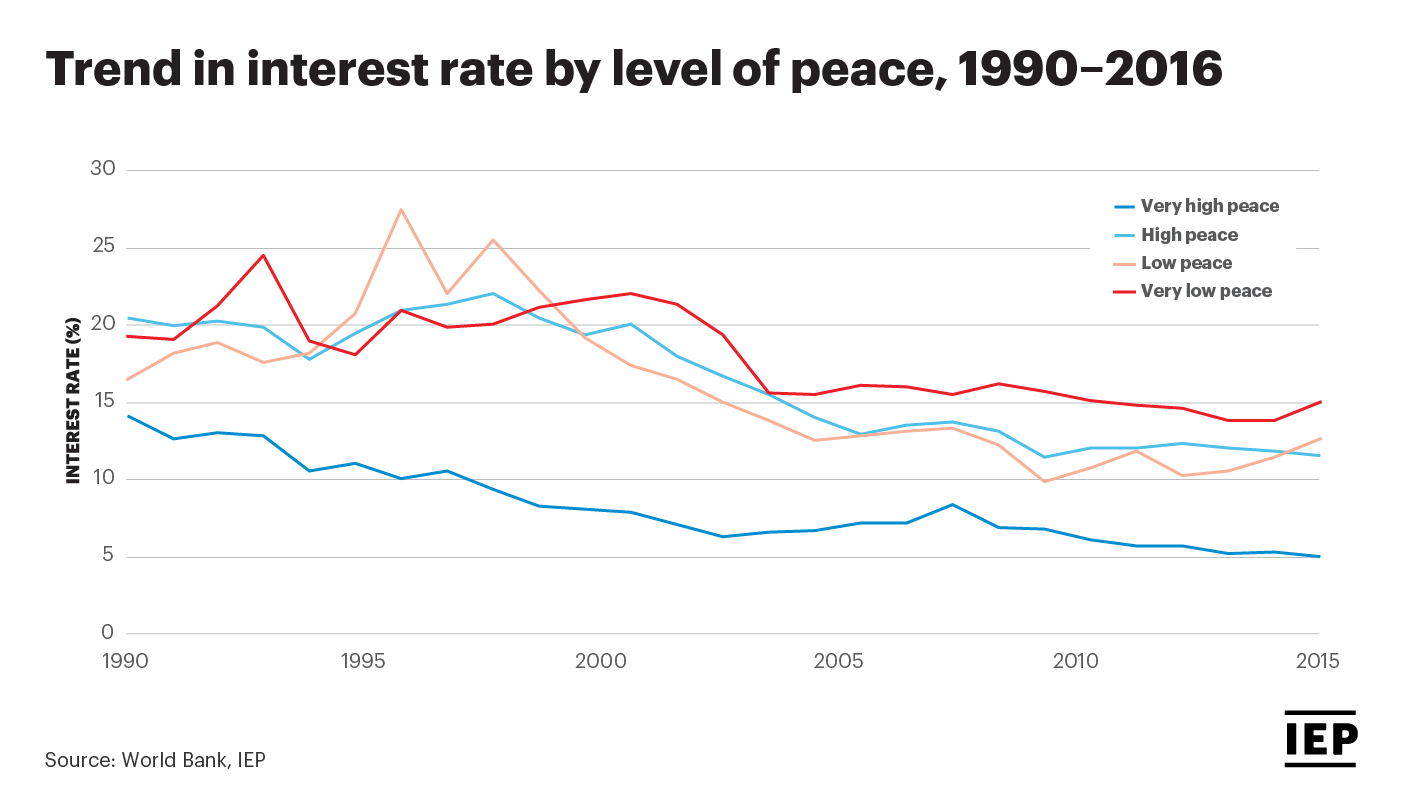
Foreign Direct Investment (FDI) is an important determinant of economic growth in developing countries. Empirical research has shown that FDI is not only a source of much needed finances, but also brings new technologies and managerial know-how.
In addition, FDI also facilitates integration with the global economy by increasing trade flows. Such investments are rare in a less peaceful context, with the exception of resource-rich countries.
Large-scale investment offers unique opportunities for less peaceful countries to benefit from capital injections, job creation and a widening tax base.
Since 1980, the most peaceful countries outside of the Organisation for Economic Cooperation and Development or China, have received the equivalent of two per cent of their GDP in foreign direct investment (FDI), on average, compared to 0.84 per cent in the least peaceful countries.
This chart shows the trend in foreign direct investment by level of peace.
